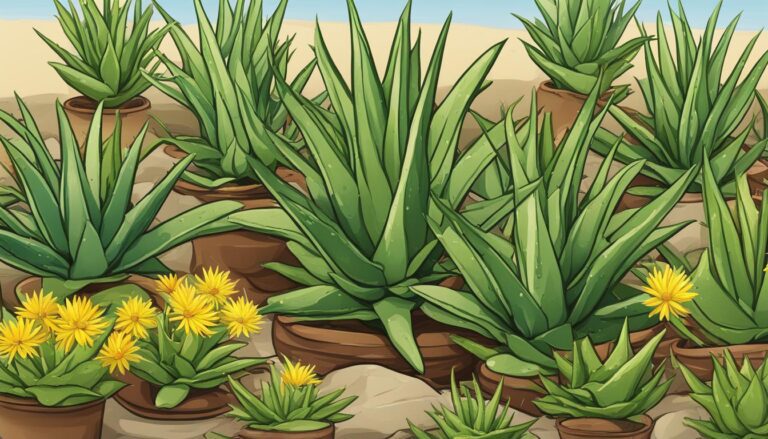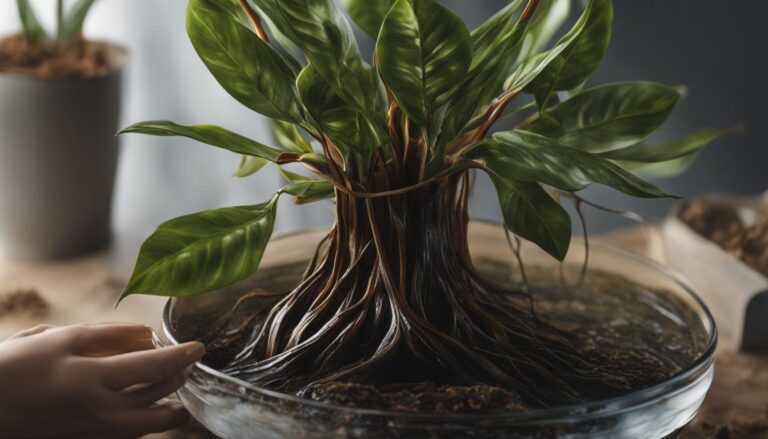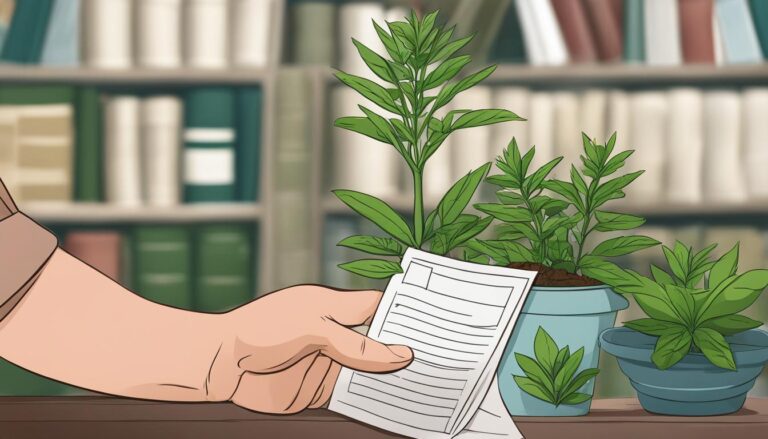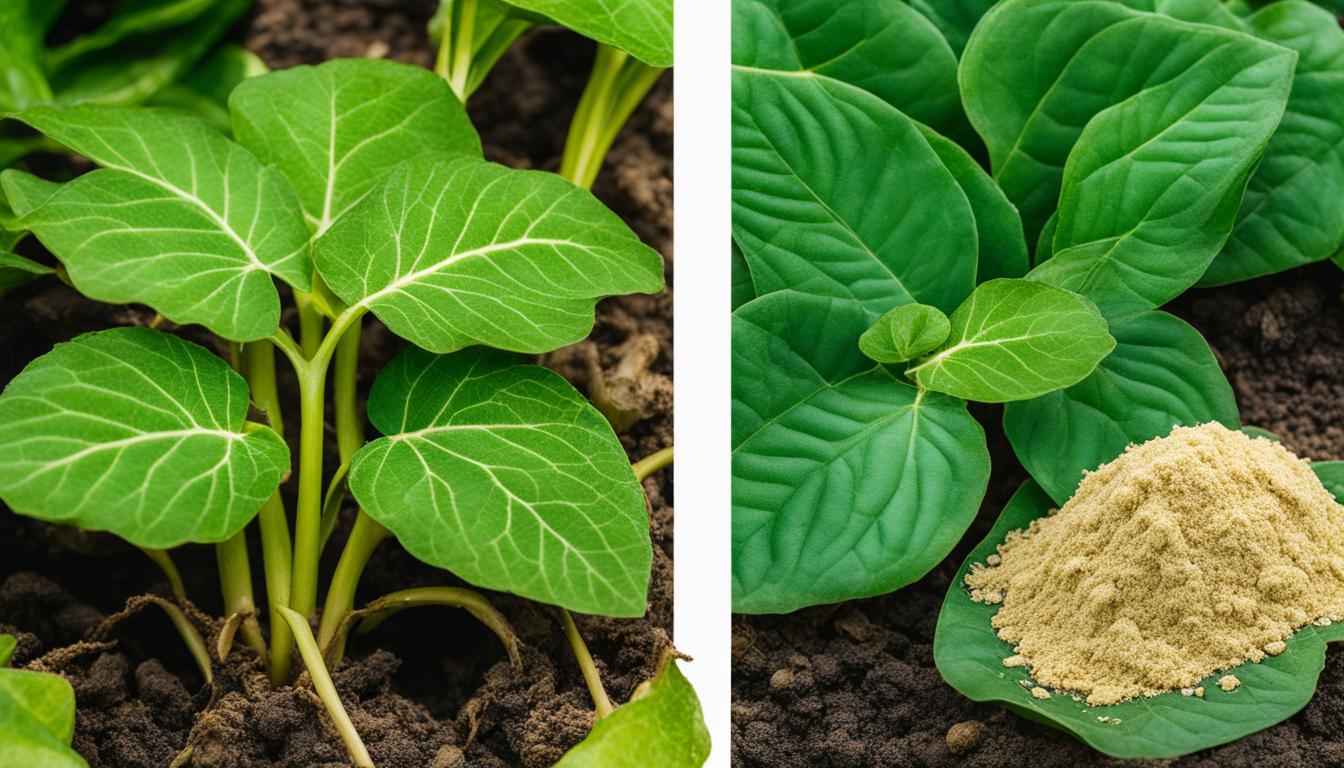
Magnesium is an essential element for plants, playing a crucial role in photosynthesis and the production of chlorophyll. A deficiency in magnesium can have detrimental effects on plant health and growth.
In this guide, I will discuss the symptoms, causes, and solutions for magnesium deficiency in plants, as well as the importance of magnesium in maintaining optimal plant health.
Key Takeaways:
- Magnesium is vital for plant growth and development, as it is involved in various important processes such as photosynthesis, protein formation, and water uptake.
- Symptoms of magnesium deficiency in plants include interveinal chlorosis, yellowing of leaves, rusty brown spots, and stunted growth.
- Causes of magnesium deficiency can include a wet and acidic root environment, high levels of potassium or calcium, limited root system, and high electrical conductivity in the growing medium.
- Treating magnesium deficiency in plants can be done through the use of Epsom salts, inorganic or organic fertilizers, and rectifying possible causes such as adjusting pH and electrical conductivity levels.
- Specific plant species, such as tomato plants and palms, are prone to magnesium deficiency and require specific treatment methods.
The Role of Magnesium in Plant Health
Magnesium plays a vital role in the overall health and development of plants. As a macronutrient, it is essential for various important processes that ensure proper growth and functioning.
One of its key functions is its involvement in photosynthesis, where magnesium is a crucial component of chlorophyll, the pigment responsible for the green color in plants.
Without sufficient magnesium, plants cannot efficiently harness the energy from sunlight and may experience stunted growth and reduced crop production.
In addition to its role in photosynthesis, magnesium is also involved in other significant processes. It contributes to the formation of proteins in plants, which are essential for the structure and function of cells.
Furthermore, magnesium is necessary for plant respiration, which is the process by which plants convert stored energy into usable forms.
It also plays a role in phosphate and nitrogen metabolism, as well as water uptake by plant roots. These processes collectively contribute to the overall health and vitality of plants.
To emphasize the importance of magnesium in plant health, it is crucial to understand its role in the fundamental processes that ensure a plant’s survival and growth.
From photosynthesis to protein formation and respiration, magnesium plays a central role in facilitating these essential functions. Therefore, maintaining adequate levels of magnesium is vital to promote optimal plant health and maximize crop productivity.
Symptoms of Magnesium Deficiency in Plants
When plants experience a magnesium deficiency, various symptoms can arise, indicating the lack of this essential nutrient. One of the most common signs is interveinal chlorosis, where the leaves yellow between the veins while the veins themselves remain green.
This chlorosis commonly begins in the lower, older leaves and may progress to affect the younger leaves as the deficiency worsens.
It is important to note that interveinal chlorosis is distinct from overall leaf yellowing, which can be caused by other nutrient deficiencies or environmental factors.
In addition to interveinal chlorosis, magnesium deficiency can also manifest as other visual cues such as the appearance of rusty brown spots on the leaves.
These spots may start small but can expand and merge, leading to the eventual browning and death of the affected tissue.
Another symptom is the development of cloudy yellow flecks between the veins of the leaves, which can be particularly noticeable against the green background. In severe cases, necrosis or the death of leaf tissue may occur.
Aside from these visual indicators, slow plant growth is another telltale sign of magnesium deficiency. Plants lacking sufficient magnesium may exhibit stunted growth, with reduced height and smaller overall size compared to healthy plants.
Additionally, the deficiency can negatively impact crop production, leading to lower yields and poorer quality of fruits, vegetables, or flowers.
- Interveinal chlorosis, with yellowing between the veins while veins remain green, is a common symptom of magnesium deficiency.
- Rusty brown spots on leaves, cloudy yellow flecks between veins, and necrosis may also indicate magnesium deficiency.
- Slow plant growth and reduced crop production are other signs of magnesium deficiency.
Causes of Magnesium Deficiency in Plants
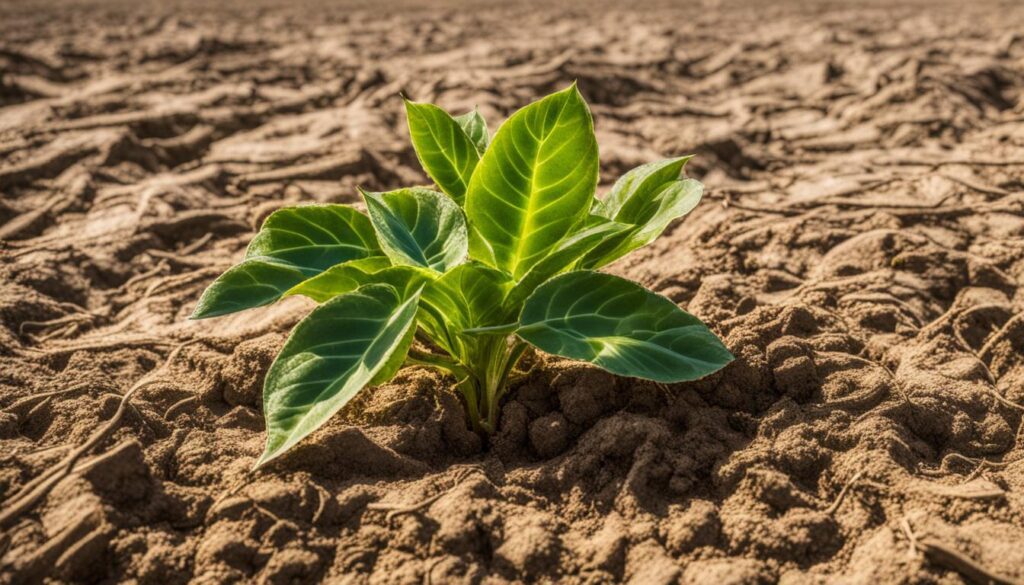
There are several reasons why plants may experience magnesium deficiency. Understanding these causes can help gardeners and farmers address the issue and provide the necessary solutions. Below are some common factors that contribute to magnesium deficiency in plants:
- Wet and Acidic Root Environment: Excessively wet or acidic soil conditions can hinder magnesium uptake by plants. When the soil is too wet, it can reduce the availability of magnesium ions for root absorption. Similarly, acidic soils with low pH levels can impede the release of magnesium from the soil particles, making it less accessible for plant roots.
- High Potassium Levels: Imbalances between potassium and magnesium can interfere with magnesium absorption. When there is an excessive supply of potassium relative to magnesium, plants may struggle to assimilate magnesium properly, leading to deficiency symptoms.
- High Calcium Levels: Similar to potassium, high levels of calcium can compete with magnesium for uptake by plant roots. When calcium levels are elevated in the soil, it can inhibit magnesium absorption, particularly in plants that have a higher calcium demand.
- Limited Root System: Plants with underdeveloped or restricted root systems may struggle to access sufficient magnesium from the soil. This can occur in situations where plants are grown in compacted soil or containers with limited space for root expansion.
- High Electrical Conductivity: Elevated electrical conductivity levels in the growing medium can disrupt magnesium uptake. Excessive levels of salts or certain nutrient imbalances can increase electrical conductivity, preventing plants from efficiently absorbing magnesium.
- Heavy Plant Demands: Certain plants, especially those with high magnesium requirements, can deplete the available magnesium in the soil more rapidly. Crops like tomatoes, peppers, and palms are known to have higher magnesium needs and may be more susceptible to deficiencies if not adequately supplied.
By addressing these causes and creating optimal growing conditions, it is possible to prevent or resolve magnesium deficiency in plants. Understanding the factors at play can help gardeners make informed decisions and implement the appropriate solutions to ensure healthy plant growth.
| Cause of Magnesium Deficiency | Description |
|---|---|
| Wet and Acidic Root Environment | Excessively wet or acidic soil conditions can hinder magnesium uptake by plants, reducing its availability for root absorption. |
| High Potassium Levels | An imbalance between potassium and magnesium levels can interfere with magnesium absorption, leading to deficiency symptoms. |
| High Calcium Levels | Elevated calcium levels in the soil can compete with magnesium for uptake, impacting its availability for plants. |
| Limited Root System | Plants with underdeveloped or restricted root systems may struggle to access sufficient magnesium from the soil. |
| High Electrical Conductivity | Elevated electrical conductivity levels can disrupt magnesium uptake, preventing plants from efficiently absorbing it. |
| Heavy Plant Demands | Plants with high magnesium requirements can deplete available soil magnesium more rapidly, leading to deficiencies. |
Solutions for Magnesium Deficiency in Plants
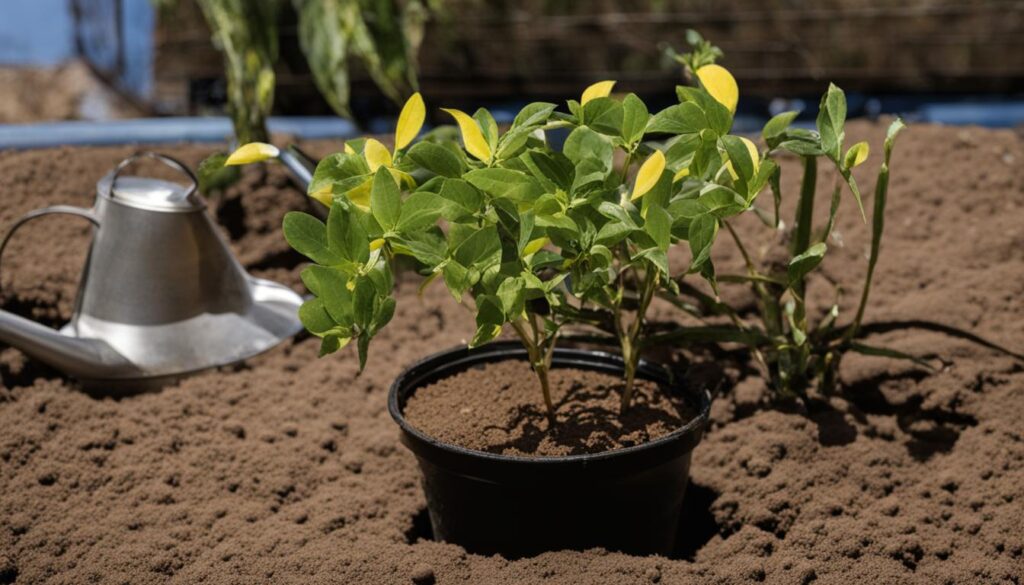
When a magnesium deficiency is diagnosed in plants, there are several effective solutions that can be implemented to rectify the issue and promote healthy growth. These solutions include the use of Epsom salts, inorganic fertilizers, organic fertilizers, and addressing possible causes of the deficiency.
Use of Epsom Salts
Epsom salts, also known as magnesium sulfate, can be used as a foliar spray or soil amendment to provide plants with the necessary magnesium. A 2% solution of Epsom salts can be sprayed directly onto the leaves, allowing for quick absorption of magnesium.
Alternatively, Epsom salts can be applied to the soil by mixing them into the irrigation water or incorporating them into the growing medium. This method allows the roots to take up the magnesium over time.
Inorganic and Organic Fertilizers
In addition to Epsom salts, inorganic and organic fertilizers containing magnesium can be used to supplement the nutrient levels in the soil. Inorganic fertilizers like Kieserite, which is a natural mineral containing magnesium, can be applied directly to the soil.
Organic fertilizers such as composted turkey or cow manure can also be used to provide a slow-release source of magnesium. These organic fertilizers not only supply magnesium but also improve soil structure and fertility.
Rectifying Possible Causes and Adjusting pH and EC Levels
To effectively address and prevent magnesium deficiency, it is important to identify and rectify any possible causes. For example, if the root environment is too wet and acidic, improving drainage and adjusting the pH level of the soil or growing medium can enhance magnesium uptake.
Similarly, if high potassium or calcium levels are inhibiting magnesium absorption, balancing nutrient levels can help alleviate the deficiency.
Adjusting the electrical conductivity (EC) levels by rinsing or feeding with water only can promote better nutrient uptake, including magnesium. Maintaining optimal root temperature is also crucial for ensuring efficient magnesium absorption by the roots.
Magnesium Deficiency in Specific Plants
When it comes to magnesium deficiency in plants, it’s important to understand that it can affect various species, including tomato plants and palms.
In tomato plants, magnesium deficiency symptoms typically make an appearance during the mid-season, and interestingly, they can be worsened by overapplication of potassium fertilizers. So, it’s crucial to strike the right nutrient balance to prevent this issue in tomato plants.
Palms, particularly date palms, are especially prone to magnesium deficiency. The telltale sign of this deficiency in palms is the yellowing of the leaf tips, while the rest of the leaf remains green.
This can be quite concerning for palm enthusiasts, as it can affect the overall appearance and health of these beautiful plants. Therefore, it’s essential to closely monitor and address magnesium deficiency in palms to ensure their optimal growth and vibrancy.
Understanding the specific symptoms and treatment methods for magnesium deficiency in different plant species is critical.
By familiarizing ourselves with the unique signs and being proactive in addressing the deficiency, we can help our plants thrive and flourish. So, whether you’re cultivating tomato plants or nurturing palms, keep a close eye on magnesium levels to ensure your plants’ well-being.
FAQ
What are the symptoms of magnesium deficiency in plants?
Symptoms of magnesium deficiency in plants include interveinal chlorosis (yellowing of the leaves while the veins remain green), rusty brown spots, cloudy yellow flecks between the veins, and in severe cases, necrosis or death of leaf tissue. Slow plant growth and poor crop production may also occur.
What causes magnesium deficiency in plants?
Magnesium deficiency in plants can be caused by a wet and cold root environment, high levels of potassium or calcium compared to magnesium, a limited root system, and high electrical conductivity in the growing medium. Heavy plant demands for magnesium can also contribute to a deficiency.
How can magnesium deficiency in plants be treated?
To treat magnesium deficiency in plants, you can spray a 2% solution of Epsom salts on the leaves or apply inorganic fertilizers like Kieserite. Organic sources such as composted turkey or cow manure can also be used. It is important to rectify possible causes of the deficiency, such as adjusting the pH of the soil or growing medium and maintaining optimal root temperature.
What is the role of magnesium in plant health?
Magnesium is vital for plant growth and development as it plays a crucial role in photosynthesis and the production of chlorophyll. It is also involved in various other important processes such as cell division, protein formation, plant respiration, phosphate and nitrogen metabolism, and water uptake.
Which plants are particularly prone to magnesium deficiency?
Tomato plants and palms, especially date palms, are particularly prone to magnesium deficiency. Tomato plants may experience magnesium deficiency mid-season, which can be exacerbated by overapplication of potassium fertilizers. Palms can exhibit symptoms such as yellowing of leaf tips while the rest of the leaf remains green.



